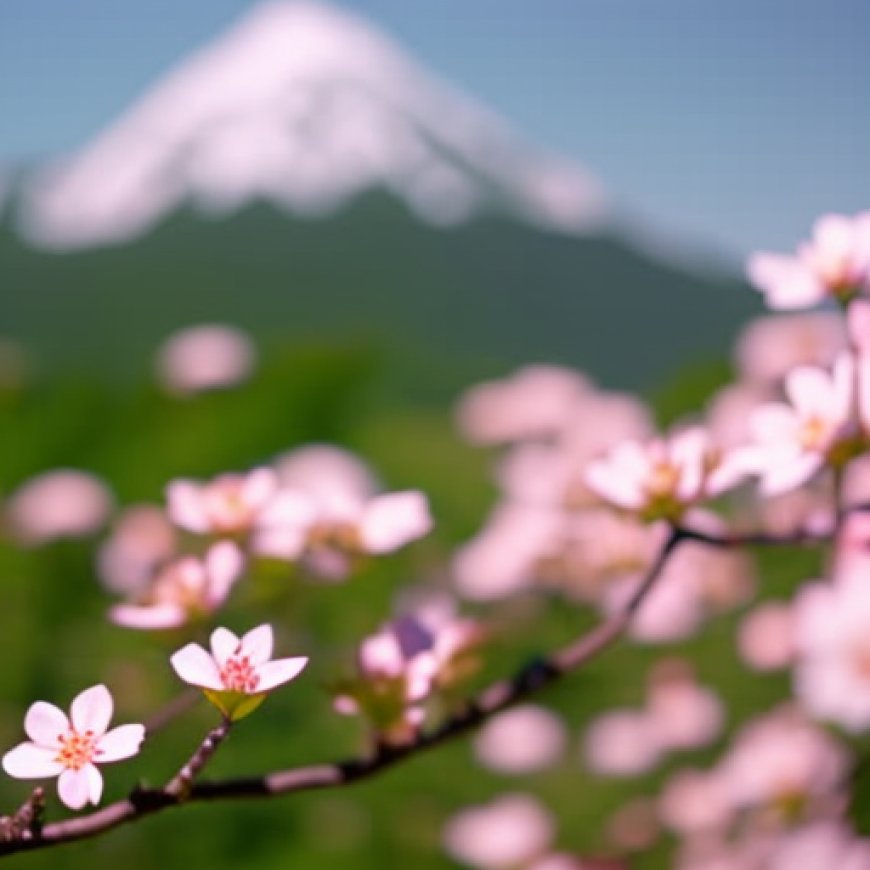This year’s cherry blossom peak bloom was a warning sign
This year's cherry blossom peak bloom was a warning sign National Geographic


You May Also Like
Peak Bloom and Changing Climate in Washington D.C.
Peak bloom, or the point at which nearly two-thirds of a tree’s blossoms open, typically lasts at least a week, but varies depending on weather conditions and species. Sometime between the end of March and beginning of April has historically been when the Yoshino Cherry, the type of tree found throughout D.C., experiences peak bloom—but scientists believe that’s changing in response to the planet’s rapidly warming temperatures.
Long-term Trend of Earlier Blooming in D.C.
Although flowering times vary annually, the long-term trend shows earlier blooming in D.C., according to Patrick Gonzalez, a climate change scientist and forest ecologist at the University of California, Berkeley.
Possible Influences on Blooming Time
“In D.C., the advance in blooming is consistent with, but not scientifically attributed to, human-caused climate change,” said Gonzalez. This means that while scientists have detected a change that is statistically different from natural variation, they haven’t yet attributed it to anthropogenic climate change. Other possible causal influences include the urban heat island effect, he noted.
Importance of Research in Kyoto
That’s where the research in Kyoto is critical. The city’s sakura records go back more than 1,200 years—offering up a treasure trove of historical weather data that has been described as likely the longest annual record of phenology, or the study of biological life cycles, anywhere on Earth.
Attributing Earlier Blooms to Climate Change
And unlike in D.C., research on earlier blooms in Kyoto “has been both detected and attributed to human-caused climate change,” said Gonzalez.
SDGs, Targets, and Indicators
| SDGs | Targets | Indicators |
|---|---|---|
| SDG 13: Climate Action | Target 13.1: Strengthen resilience and adaptive capacity to climate-related hazards and natural disasters | Indicator not mentioned in the article |
| SDG 15: Life on Land | Target 15.5: Take urgent and significant action to reduce the degradation of natural habitats, halt the loss of biodiversity, and prevent the extinction of threatened species | Indicator not mentioned in the article |
1. Which SDGs are addressed or connected to the issues highlighted in the article?
SDG 13: Climate Action
The issue of earlier blooming of cherry blossoms in D.C. and Kyoto is connected to SDG 13, which focuses on taking urgent action to combat climate change and its impacts. The article mentions that the changing blooming times are attributed to the planet’s rapidly warming temperatures, indicating a connection to climate change.
SDG 15: Life on Land
The issue of earlier blooming also relates to SDG 15, which aims to protect, restore, and promote sustainable use of terrestrial ecosystems. The article highlights the potential impact of earlier blooms on natural habitats and biodiversity.
2. What specific targets under those SDGs can be identified based on the article’s content?
Target 13.1: Strengthen resilience and adaptive capacity to climate-related hazards and natural disasters
The article does not explicitly mention this target, but the issue of earlier blooming due to climate change highlights the need to strengthen resilience and adaptive capacity to the changing climate.
Target 15.5: Take urgent and significant action to reduce the degradation of natural habitats, halt the loss of biodiversity, and prevent the extinction of threatened species
The article does not directly address this target, but the potential impact of earlier blooms on natural habitats and biodiversity suggests the need for action to prevent further degradation and loss.
3. Are there any indicators mentioned or implied in the article that can be used to measure progress towards the identified targets?
The article does not mention any specific indicators that can be used to measure progress towards the identified targets. However, indicators related to temperature changes, blooming times, and impacts on ecosystems could be relevant for measuring progress.
Behold! This splendid article springs forth from the wellspring of knowledge, shaped by a wondrous proprietary AI technology that delved into a vast ocean of data, illuminating the path towards the Sustainable Development Goals. Remember that all rights are reserved by SDG Investors LLC, empowering us to champion progress together.
Source: nationalgeographic.com

Join us, as fellow seekers of change, on a transformative journey at https://sdgtalks.ai/welcome, where you can become a member and actively contribute to shaping a brighter future.







